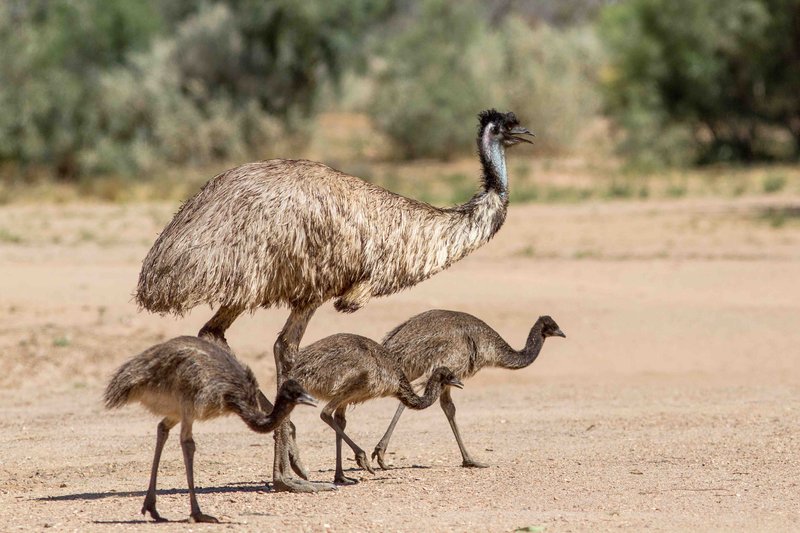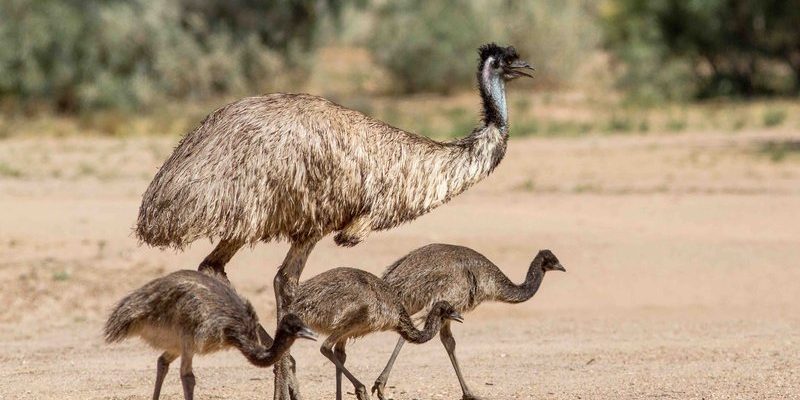
Here’s the thing: the emu is more than just a quirky bird. Its adaptations and behaviors reveal a lot about survival in the wild, and they tell stories of the unique ecosystems of Australia. So, let’s explore the top ten things you never knew about these majestic creatures. Trust me; you’ll want to share these at your next gathering!
1. Emus Are Surprisingly Fast Runners
You might picture an emu waddling along leisurely, but you’d be mistaken! Emus can reach speeds of up to 30 miles per hour (about 48 kilometers per hour). To give you an idea of how fast that is, imagine being chased by a bird that can outrun a small car in short bursts. Their long, powerful legs are designed for sprinting, allowing them to escape from predators effectively.
What’s even more fascinating is how they manage to maintain their speed. Emus have a unique run that involves a long stride, and their large, muscular legs are built for both power and endurance. So, if you ever find yourself in a race against an emu, you might want to reconsider your strategy!
2. They Have a Unique Mating Ritual
Emus are quite the romantics—well, as far as birds go! Their mating rituals are not only interesting but also a bit comical. When a male emu wants to attract a female, he will engage in a series of elaborate dances. This display includes hopping, running in circles, and making a variety of deep, booming calls that can be heard over long distances.
After the courtship, the female lays her eggs, which can be anywhere from 5 to 15. But here’s where it gets intriguing: the male takes on the responsibility of incubating the eggs. For about 8 weeks, he’ll keep them warm and safe, rarely leaving the nest. Talk about a dedicated dad!
3. Emus Have a Unique Way of Communicating
Emus are not just quiet birds; they have a rich vocabulary of sounds. Their communication includes deep bellows, booming calls, and even hissing. These vocalizations serve various purposes, from attracting mates to warning off would-be predators. Imagine walking through an Australian bush and hearing this low rumbling noise—it’s like nature’s version of a concert!
Interestingly, their vocal cords allow them to produce sounds that are quite different from other birds. They can even create low-frequency sounds that travel over long distances. You might be wondering how this helps them in the wild. Well, it allows them to communicate with other emus, even when they’re far apart, ensuring the flock stays connected and safe.
4. They Can Go Without Food or Water for Long Periods
Emus are incredibly resilient creatures. In the wild, they can endure long periods without food or water, sometimes lasting several days. This ability is crucial for survival in the harsh Australian outback, where resources can be scarce.
During such times, emus rely on their body’s fat reserves and can even lower their metabolic rate to conserve energy. It’s like they have a built-in survival mode that kicks in when times get tough. So the next time you’re feeling a bit peckish or thirsty, remember that an emu would have no problem sticking it out!
5. They Play an Important Role in Their Ecosystem
Emus are more than just interesting birds—they’re vital contributors to their ecosystem. As they wander the Australian landscape, they munch on seeds, fruits, and insects. This foraging behavior helps with seed dispersal, allowing new plants to grow in different areas.
By spreading seeds, emus aid in the growth of vegetation, which in turn provides habitats for other wildlife. They essentially act as nature’s gardeners, helping maintain the delicate balance of their environment. It’s a reminder of how interconnected nature can be!
6. Emus Are Flightless Birds
Although they’re classified as birds, emus can’t fly. Instead, they’ve evolved to be excellent runners. Their wings are much smaller compared to their body size and are used primarily for balance and display rather than flight.
This flightlessness isn’t a drawback, though. Being grounded allows emus to adapt to their environment and thrive in the open spaces of Australia. Their strong legs and large feet help them navigate various terrains, from grassy plains to bushland. So while they might not soar through the skies, they sure know how to move on land!
7. Their Plumage Is Unique
Emu feathers are pretty remarkable and set them apart from many other birds. Unlike most birds that have smooth-feathered bodies, emus have coarse, shaggy feathers that give them a distinct look. These feathers are not just for show—they serve several practical purposes.
The unique structure of their feathers allows them to insulate against temperature changes. This is essential for surviving the extreme weather conditions that can hit the Australian outback. Additionally, their darker feathers help absorb sunlight, keeping them warmer during cooler nights. Who knew that such a quirky look had such practical benefits?
8. They Can Live for Over 20 Years
In the wild, emus can live for ten to twenty years, but in captivity, they may reach up to 30 years. This longevity means they have plenty of time to breed, play, and explore their surroundings.
You might find it fascinating to think about how these birds go through different life stages, much like humans do. They start off small and fluffy, growing into towering adults with their own personalities. And just like any species, they face challenges and experiences that shape who they are.
9. Emus Have Few Natural Predators
Thanks to their size and speed, emus have very few natural enemies. While young emus might be vulnerable to predators like dingoes, adult emus can fend off most threats due to their size and running ability.
In fact, adult emus are known to be quite good at defending themselves. When threatened, they can deliver powerful kicks, which can deter most attackers. These birds are not to be messed with!
10. Emus Are Farmed for Their Meat, Eggs, and Oil
In recent years, emus have become a popular choice for farming due to their meat and eggs, which are considered a delicacy in some places. Emu meat is lean and high in protein, while their eggs are large and rich in flavor.
Additionally, emu oil is gaining notoriety for its potential health benefits, as it is believed to have anti-inflammatory properties. Farms dedicated to emus are cropping up in various regions, allowing more people to learn about these fascinating birds.
So, whether it’s their quirky behaviors, unique adaptations, or their contributions to the ecosystem, emus are truly one-of-a-kind. Next time someone mentions these remarkable birds, you’ll have a treasure trove of facts to share! The emu is a testament to nature’s creativity and resilience, standing tall in the heart of Australia.
In conclusion, emus offer us a fascinating glimpse into the diversity of wildlife. They remind us of the beauty and complexity of nature, encouraging us to appreciate the unusual—like a huge, flightless bird with a knack for running and a strong familial instinct. So, let’s celebrate emus and all the incredible things they bring to our world!

